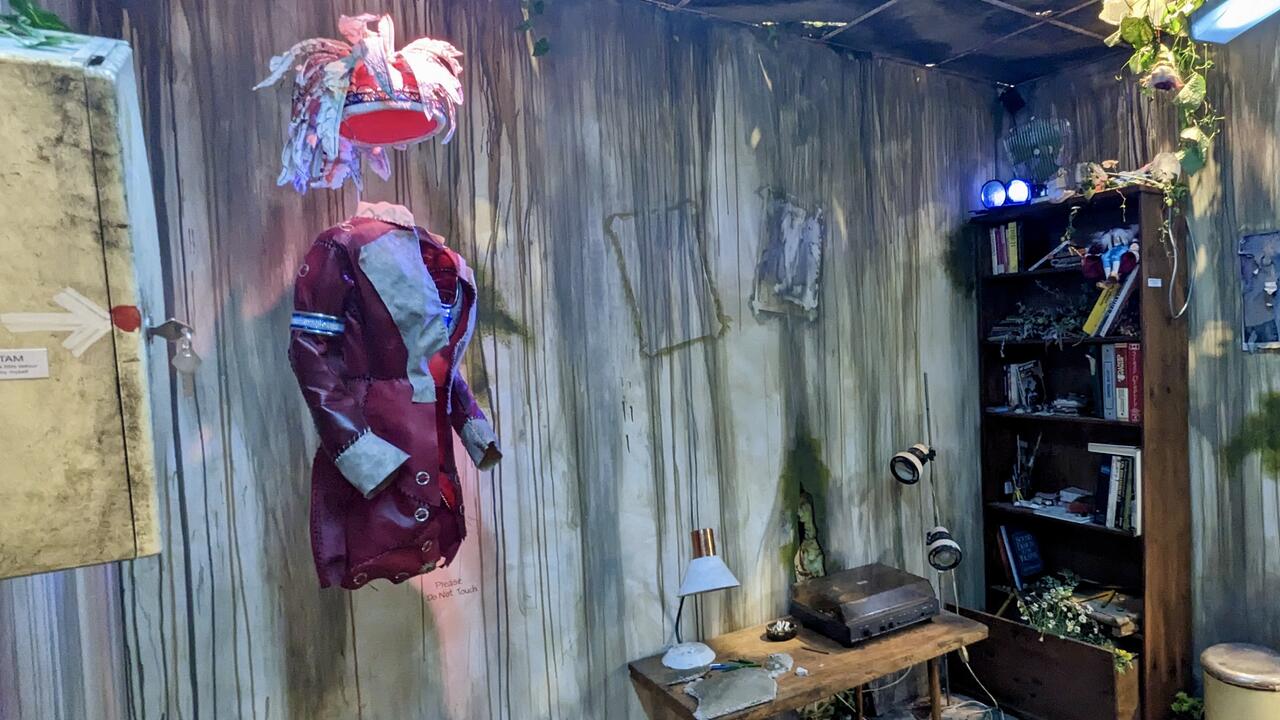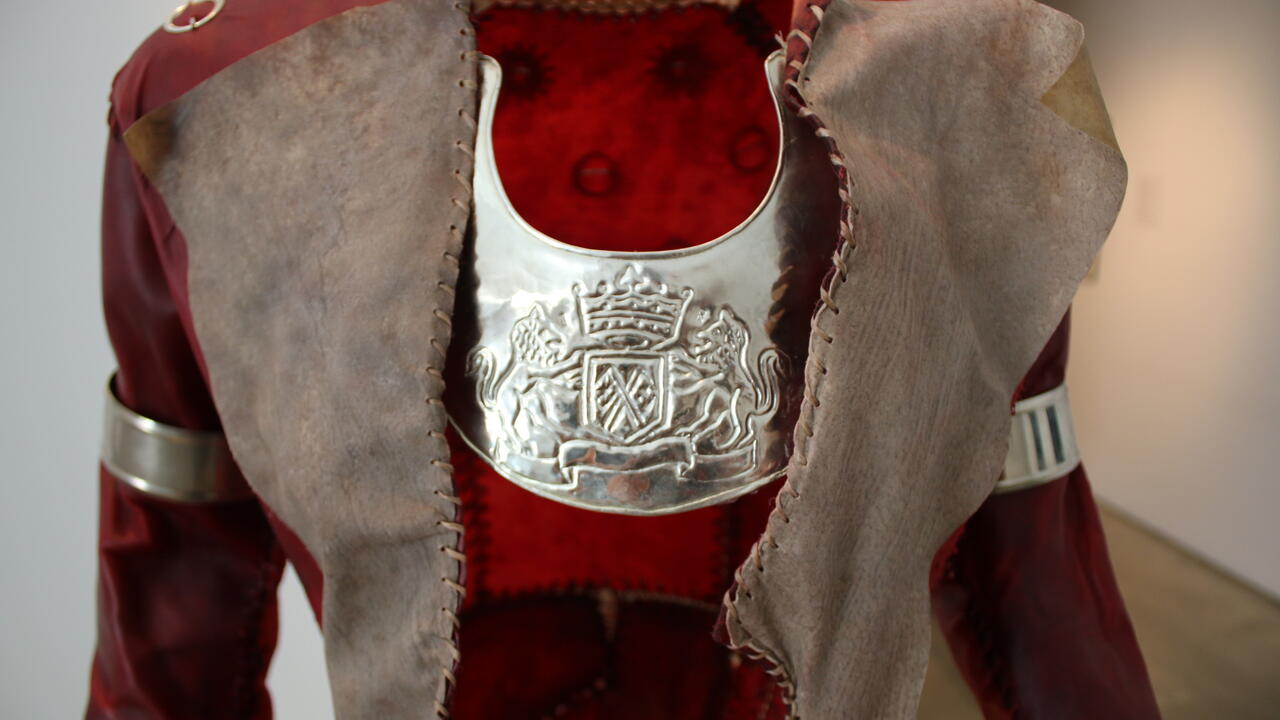
A call to consciousness
Integrating Indigenous ways of thinking and making in all their work, Professor Jay Havens offers audiences, colleagues and students opportunities to learn and reciprocate

Integrating Indigenous ways of thinking and making in all their work, Professor Jay Havens offers audiences, colleagues and students opportunities to learn and reciprocate
By Wendy Philpott Faculty of ArtsAcross their professional activities as artist, theatre designer, and University professor, Jay Havens creates welcoming channels for indigenization, reconciliation, and decolonization.
Joining Waterloo’s Department of Communication Arts in January 2023, Havens is a 2Spirit multi-media artist and educator and member of the Kanien’kehà:ka Bear Clan from Six Nations of the Grand River. Havens has created large scale artworks and interdisciplinary projects throughout Turtle Island and is a set and costume designer for professional stage companies.
At a wampum ceremony on campus this spring Havens exemplified institutional decolonization when they presented their department with a wampum belt as a tangible reminder of their contract of “good-minded relationship” with the University of Waterloo.
More recently, Havens was one of five designers chosen to present inside Canada’s pavilion at the 2023 Prague Quadrennial (PQ23) of Performance Design and Space, a prestigious international gathering of theatre designers. The installation entitled A Carrying Vessel features their work called The Redcoat emphasizing decolonization and opening space “for both traditional ways of knowing and the wisdom of newcomers to broaden the national discourse.”
For Havens, who first experienced PQ in 2007, this ten-day gathering is a unique, horizon-expanding opportunity for designer and student communities as well as international audiences. “I think it's just stunning, the different experiences from all over scenography and theatre presented there. And the 2023 installations that came out of the pandemic were super interesting — to see what different countries had done to keep their artists working.”
The designers of A Carrying Vessel were all BIPOC artists, which for Haven’s signals a cultural shift. “It was great to represent Indigenous scenography on such a global scale and be part of a group of artists who are all people of colour — it’s good to be included in that team and not be tokenized,” they say.
The Canadian installation recreated a studio space that audiences were invited to enter and engage with the different but thematically connected works inside. Havens’ artwork entitled The Redcoat was animated by light and sound which spectators activated by their movement in proximity.

The Redcoat is a rawhide sculpture representing an 18th century British military jacket that is heavily indigenized with various historical and contemporary design elements, including a Gustoweh headdress suspended above it. “The Redcoat reflects the history of the Haudenosaunee Confederacy and how we came to the Grand River when George Washington forcibly removed us from our ancestral homelands of Northern New York State — so, we came as refugees up to the Grand River. As allies with the British in the American Revolution, the Haldimand tract was promised to us in exchange for our partnership in the war.”
For Havens, the whole jacket operates as a mnemonic device and “a way to talk about that history with an audience”. Different features of the jacket act as memory triggers, which are similar to the way a wampum belt serves to represent history or a relationship.
“While The Redcoat is talking about colonial history, it's also turning that history on its head to look at the Indigenous side of the story,” says Havens. This is where the Indigenous materials and traditions used in the work reclaim the colonial British garment: the jacket is made out of deer rawhide rather than the traditional cotton or linen materials. “It's hard like a drum because you work with rawhide while wet and it dries to holds its shape really well. When it hangs it has a certain presence in the space, almost ghostlike”
In addition to the headdress, Havens added accoutrements made of trade silver, which Haudenosaunee people have incorporated in their clothing from the 1700s up to the present day. “You can see these trade silver clasps and medallions on regalia in powwows,” says Havens, adding that Haudenosaunee people wear such indigenized military jackets to show their heritage and ties with the American Revolution and war of 1812.

The audio activated when viewers stood near The Redcoat is a unique territory acknowledgement written by Yolanda Bonnell, actor and playwright, who performs it with two other Indigenous actors, Gordon White and Natasha Greenblatt. Havens explains: “We called it more of a call to consciousness because it asks about reciprocity: What are you actually giving back to the land instead of just acknowledging the land?”
As they reflected on their experiences at PQ23, Havens adds, “it was really special connecting with other Indigenous designers from other parts of the world and seeing how they think about design. We have a lot in common.”
By integrating Indigenous ways of thinking and making in all their work, Havens calls audiences, colleagues and students to consciousness – and is activating the vision of Waterloo’s Indigenous Strategic Plan to “promote reconciliation and decolonization, understanding, and relationship building.”
Photos of The Redcoat installed as part of A Carrying Vessel at the 2023 Prague Quadrennial, The Redcoat close-up, and artist photo are courtesy of Jay Havens.

Read more
Professor Jay Havens presents a handcrafted Wampum Belt to the Department of Communication Arts as a living contract

Read more
Waterloo historian and anthropologist explains how the importance of women in the community is inextricably tied to the land

Read more
Canada Research Chair dedicates project to redressing educational and leadership inequities
The University of Waterloo acknowledges that much of our work takes place on the traditional territory of the Neutral, Anishinaabeg, and Haudenosaunee peoples. Our main campus is situated on the Haldimand Tract, the land granted to the Six Nations that includes six miles on each side of the Grand River. Our active work toward reconciliation takes place across our campuses through research, learning, teaching, and community building, and is co-ordinated within the Office of Indigenous Relations.